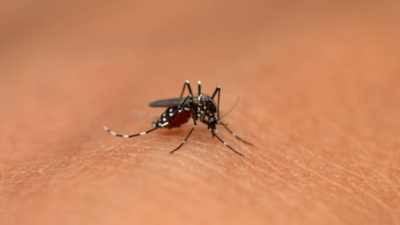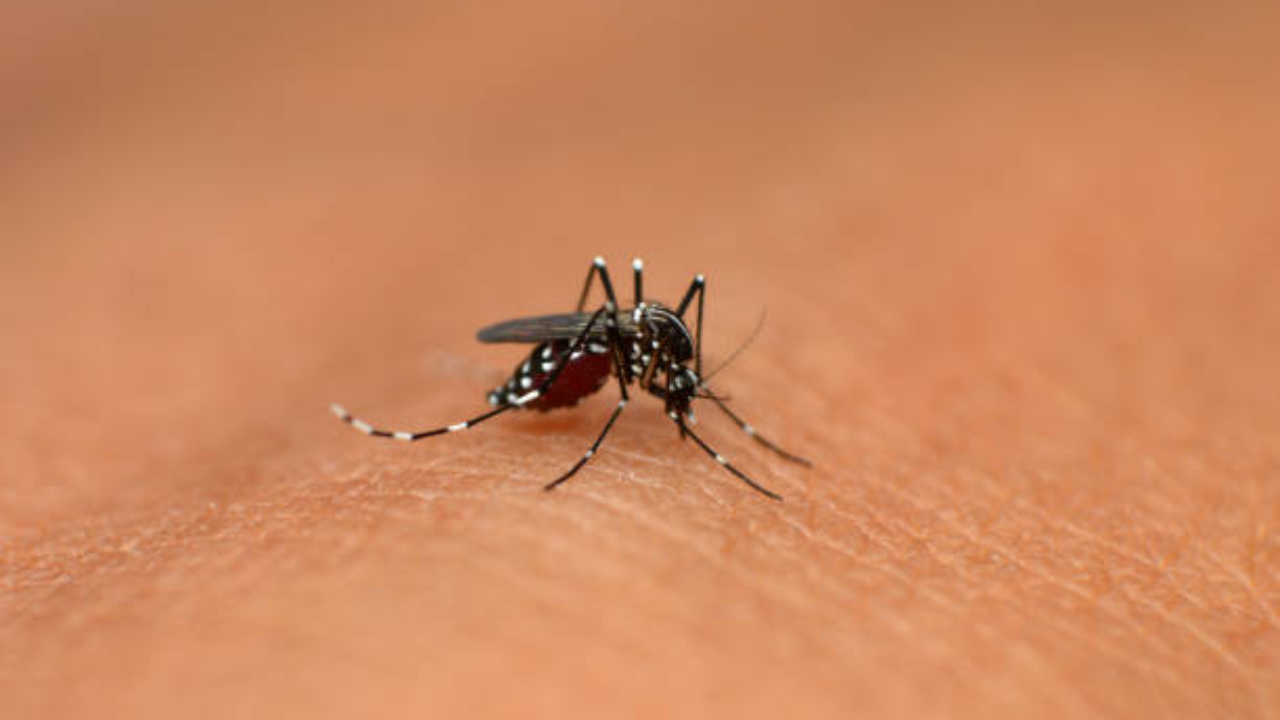Dengue cases
are rising rapidly and if proper preventive measures are not taken at the right time the disease can spread faster and affect a large section of the population. One of the key preventive measures is to identify the presence of the dengue causing mosquito, which is the
Aedes mosquito
.
Identifying the Aedes mosquito, which spreads
dengue fever
, is essential in controlling the disease and preventing its transmission. These mosquitoes, primarily the Aedes aegypti and Aedes albopictus, are responsible for spreading dengue virus and are also notorious for spreading other illnesses like chikungunya, Zika, and yellow fever.
Poll
Are you taking preventive measures against dengue?
Here’s how we can identify the dengue mosquito
Size and shape of the dengue mosquito
Aedes mosquitoes are small, and dark in color and are usually around 4-7 millimeters in length. They have a slender body and long legs. Though similar in size to other mosquitoes, they stand out due to their distinctive markings.
Black and white stripes on dengue mosquito
Aedes mosquitoes are famously recognized by their black and white markings. The Aedes aegypti mosquito has white stripes on its legs and a lyre-shaped (musical harp-like) pattern on its thorax (the upper body). This white marking on a black body is a strong visual cue for distinguishing them from other mosquitoes, which tend to be more uniformly colored.
The Aedes albopictus mosquito, commonly called the Asian tiger mosquito, also has distinct white stripes, particularly a single white stripe that runs down the center of its back, in addition to its striped legs.
How to identify one when it is resting or sitting
When at rest, Aedes mosquitoes hold their body at an angle, rather than parallel to the surface like some other mosquito species do. This slanted posture may not always be noticeable but can be an additional clue to identifying them.
Dengue mosquitoes are daytime feeders
Unlike the Anopheles mosquitoes (which spread malaria) that are typically active during dawn and dusk, Aedes mosquitoes bite during the daytime. Their peak biting times are early in the morning (just after sunrise) and late in the afternoon (before sunset). However, they can bite throughout the day, especially in shaded areas.
Aedes aegypti is anthropophilic, which means it prefers human blood over animal blood. It often lives near or inside homes, making urban and semi-urban areas prime locations for dengue outbreaks.
Aedes mosquitoes are known to take multiple blood meals in one sitting, meaning they can bite multiple people in a short period. This increases the likelihood of disease transmission if the mosquito is carrying the dengue virus.
Dengue mosquitoes breed in stagnant water
Aedes mosquitoes breed in clean, stagnant water. They are often found in flower pots, discarded tires, buckets, birdbaths, clogged gutters, and water storage containers which are mostly neglected in households. These mosquitoes do not need large bodies of water to reproduce; even a small amount of water (as little as a bottle cap’s worth) can be enough for them to lay their eggs.
Aedes mosquitoes lay their eggs on the walls of water-holding containers. The eggs are resistant to desiccation and can survive for long periods (even several months) in dry conditions. When water is added to the container, the eggs hatch and the mosquito lifecycle begins.
How to prevent dengue by targeting the mosquito
Elimination of breeding sites is probably the most effective way to get rid of an Aedes mosquito population. Regularly drain and clean the areas where water may be held, cover water storage containers and bags, and maintain proper drainage. Even little patches of standing water should be removed in order to prevent breeding by mosquitoes. This can be done by spraying insecticides while putting larvicides on all water sources so that larvae do not mature into adults.
Use of mosquito repellents containing DEET, picaridin, or oil of lemon eucalyptus prevents bites. Although Aedes mosquitoes are diurnal, protection can be enhanced using bed nets treated with insecticides at the time of peak biting (early morning and late afternoon).
Wearing long sleeved shirts, long pants, and socks outside will reduce exposure to bites, especially during peak mosquito hours. The use of light-colored clothing is best because mosquitoes are attracted to darker colors.
I’m Manas Ranjan Sahoo: Founder of “Webtirety Software”. I’m a Full-time Software Professional and an aspiring entrepreneur, dedicated to growing this platform as large as possible. I love to Write Blogs on Software, Mobile applications, Web Technology, eCommerce, SEO, and about My experience with Life.



